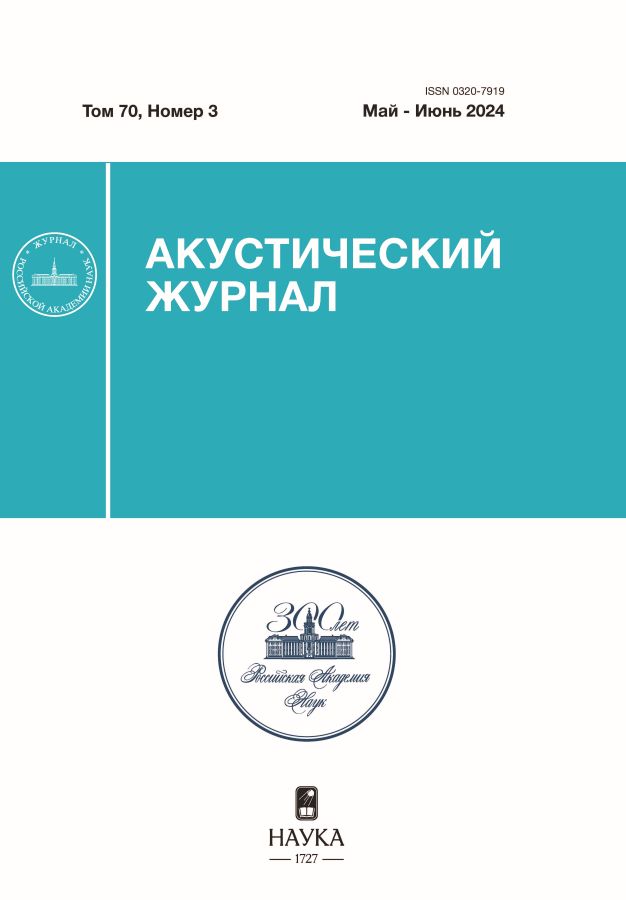Optimization of dissipative mufflers
- 作者: Komkin A.I.1, Bykov A.I.1, Karnaukhova L.S.1
-
隶属关系:
- Bauman Moscow State Technical University
- 期: 卷 70, 编号 3 (2024)
- 页面: 140-150
- 栏目: АКУСТИЧЕСКАЯ ЭКОЛОГИЯ. ШУМЫ И ВИБРАЦИИ
- URL: https://kazanmedjournal.ru/0320-7919/article/view/648429
- DOI: https://doi.org/10.31857/S0320791924030133
- EDN: https://elibrary.ru/ZKSOYA
- ID: 648429
如何引用文章
详细
The method of selecting the configuration of dissipative mufflers with the required acoustic efficiency is considered. The peculiarity of the considered approach is the use of an integral indicator of acoustic efficiency and dimensionless geometric parameters. The studies were carried out using finite element calculations. In the finite element model of a dissipative mufflers, acoustic characteristics of a fibrous sound-absorbing material obtained from experimental studies were used.
全文:
作者简介
A. Komkin
Bauman Moscow State Technical University
编辑信件的主要联系方式.
Email: akomkin@mail.ru
俄罗斯联邦, Moscow, 105005
A. Bykov
Bauman Moscow State Technical University
Email: akomkin@mail.ru
俄罗斯联邦, Moscow, 105005
L. Karnaukhova
Bauman Moscow State Technical University
Email: akomkin@mail.ru
俄罗斯联邦, Moscow, 105005
参考
- Старобинский Р.Н., Юдин Е.Я. Об одной модели распространения низкочастотного звука в облицованном канале // Акуст. журн. 1972. Т. 18. № 1. С. 115–119.
- Cummings A., Chang I.-J. Sound attenuation of a finite length dissipative flow duct silencer with internal mean flow in the absorbent // J. Sound Vib. 1988. V. 127. № 1. P. 1–17.
- Peat K.S. A transfer matrix for an absorption silencer element // J. Sound Vib. 1991. V. 146. № 2. P. 353–360.
- Wang C.-N. Numerical decoupling analysis of resonator with absorbent material // Appl. Acoust. 1999. V. 58. № 1. С. 109−122.
- Glav R. The transfer matrix for a dissipative silencer of arbitrary cross-section // J. Sound Vib. 2000. V. 236. № 4. P. 575–594.
- Auredgan Y., Debray A., Starobinski R. Low frequency sound propagation in a coaxial cylindrical duct: application to sudden area expansions and to dissipative silencers // J. Sound Vib. 2001. V. 246. № 3. P. 461–473.
- Kirby R. Transmission loss predictions for dissipative silencers of arbitrary cross section in the presence of mean flow // J. Acoust. Soc. Am. 2003. V. 114. № 1. P. 200–209.
- Selamet A., Xu M.B., Lee I.-J., Huff N.T. Analytical approach for sound attenuation in perforated dissipative silencers // J. Acoust. Soc. Am. 2004. V. 115. № 5. Pt. 1. P. 2091–2099.
- Panigrahi S.N., Munjal M.L. Comparison of various methods for analyzing lined circular ducts // J. Sound Vib. 2005. V. 285. № 4–5. P. 905–923.
- Venegas К., Arenas J.P., Boutin C. Analytical modeling of dissipative silencers // J. Acoust. Soc. Am. 2018. V. 144. № 5. P. 2998–3009.
- Astley R.J., Cummings A. A finite element scheme for attenuation in ducts lined with porous material: comparison with experiment // J. Sound Vib. 1987. V. 116. № 2. P. 239–263.
- Bilawchuk S., Fyfe K.R. Comparison and implementation of the various numerical methods ёused for calculating transmission loss in silencer systems // Appl. Acoust. 2003. V. 64. № 9. P. 903–916.
- Kirby R. A comparison between analytic and numerical methods for modelling automotive dissipative silencers with mean flow // J. Sound Vib. 2009. V. 325. № 5. P. 565−582.
- Barbieri R., Barbieri N. Finite Element Acoustic Simulation Based Shape Optimization of a Muffler // Appl. Acoust. 2006. V. 67. № 4. P. 346–357.
- Комкин А.И. Оптимизация реактивных глушителей шума // Акуст. журн. 2010. Т. 56. № 3. С. 373–379.
- Воробьева Л.С., Комкин А.И. Расчет и проектирование диссипативных глушителей шума методом конечных элементов // Изв. вузов. Машиностроение. 2013. № 11. С. 58–63.
- Карнаухова Л.С., Комкин А.И. Интегральные показатели акустической эффективности диссипативных глушителей шума // Акустика среды обитания: cб. трудов I Всерос. конф. М., 2016. С. 80–87.
- Chiu M.C. Shape Optimization of One-chamber Perforated Mufflers Filled with Wool Using Simulated Annealing // J. Marine Science and Technology. 2013. V. 21. № 4. P. 380−390.
- Ferrandiza B., Denia F.D., Martinez-Casas J., Nadal E., Ródenas J.J. Topology and shape optimization of dissipative and hybrid mufflers // Structural and Multidisciplinary Optimization. 2020. V. 62. P. 269–284.
- Delany M.E., Bazley E.N. Acoustical properties of fibrous absorbent materials // Appl. Acoust. 1970. V. 1. № 3. P. 105–115.
- Ионов И.А., Комкин А.И. Эмпирические формулы для описания акустических характеристик звукопоглощающих материалов. Обзор // Акустика среды обитания: сб. трудов III Всерос. конф. М., 2018. С. 43−49.
- Комкин А.И., Львов В.А., Нестеров Н.С. Измерение сопротивления продуванию волокнистых звукопоглощающих материалов // Измерительная техника. 2017. № 7. С. 62–65.
补充文件
















